Grasshoppers, with their vibrant colors and intricate patterns, have long captured the fascination of both children and adults alike. These remarkable insects are not only known for their distinctive appearance but also for their vital role in our ecosystems. In this article, we delve into the world of grasshopper coloring pages, where art meets science, and creativity meets education. Whether you’re a budding artist seeking inspiration or an educator looking for engaging resources to teach about these fascinating creatures, our collection of grasshopper pages promises to provide a delightful and informative journey through the world of these remarkable insects.
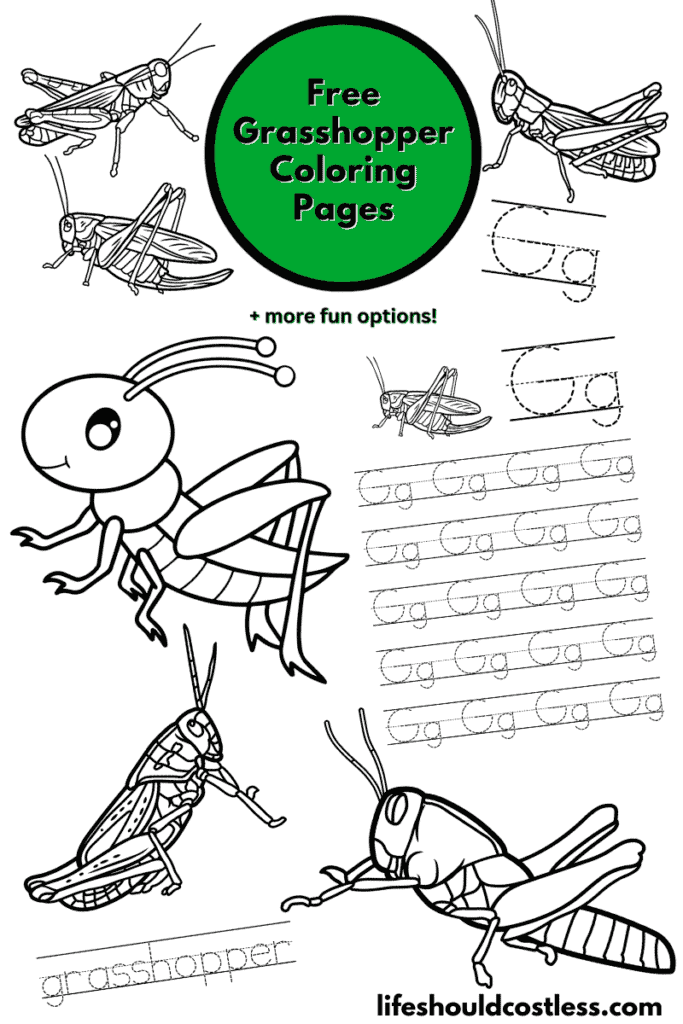
Please feel free to pick the design that resonates with your needs or preferences.
After making your selection, you can download the free PDF template, print it out, and enjoy the delightful art of coloring to your heart’s content.
Additionally, you have the option to utilize these designs as embroidery patterns or draw creative inspiration from them when crafting intricate fine line tattoos.
Grasshopper facts
For those who are new to my coloring pages, it’s worth mentioning that I enjoy offering the opportunity to explore the subject matter, allowing you to seamlessly transform your coloring experience into an educational lesson.
So, let’s embark on this journey together!
Grasshoppers are fascinating insects with a range of intriguing characteristics.
Here are lots of fun and interesting, facts about grasshoppers:
- Jumping Prowess: Grasshoppers are renowned for their exceptional jumping abilities. They have powerful hind legs specially adapted for leaping, allowing them to cover distances up to 20 times their body length. This remarkable skill helps them evade predators and travel efficiently.
- Variety of Species: There are over 11,000 known species of grasshoppers worldwide, and they come in a multitude of shapes, sizes, and colors. Some are brilliantly colored to warn predators of their toxicity, while others are camouflaged to blend into their surroundings.
- Musical Insects: Male grasshoppers are often associated with their distinct chirping or singing sounds. They produce these sounds by rubbing their wings or legs together in a process called stridulation. These calls are used primarily to attract mates and establish territory.
- Herbivorous Diet: Grasshoppers are herbivores, primarily feeding on plant material such as leaves, grasses, and crops. In large numbers, they can become agricultural pests, causing damage to crops and vegetation.
- Molting Process: Like other insects, grasshoppers undergo molting, a process where they shed their exoskeleton to grow. They molt several times during their lives, and each stage is called an instar. This allows them to increase in size and develop wings if they are winged species.
- Short Lifespan: The lifespan of a grasshopper is relatively short, typically ranging from a few months to a year, depending on the species and environmental conditions. Their life cycle consists of egg, nymph, and adult stages.
- Excellent Camouflage: Some grasshopper species have evolved remarkable camouflage strategies. They can mimic the appearance of leaves or twigs, making it difficult for predators to spot them. This adaptation aids in their survival.
- Group Behavior: In certain situations, grasshoppers exhibit gregarious behavior, forming swarms or groups known as locusts. Locusts can cause widespread devastation to crops and vegetation when they migrate in search of food.
- Cooling Mechanism: Grasshoppers have a unique cooling system that involves tiny air sacs in their body, known as tracheae. By rapidly pumping their abdomen, they can circulate air through these sacs, dissipating excess heat and preventing overheating.
- Communication: Grasshoppers use a variety of signals to communicate with each other. Apart from their acoustic signals, they also employ visual cues, such as body movements and coloration, to convey information about their fitness and intentions.
- Apoidea Relationship: Some species of grasshoppers have developed a mutually beneficial relationship with certain species of ants. They secrete a sugary substance that ants feed on, and in return, the ants offer protection from predators.
- Ancient Insects: Grasshoppers belong to an ancient group of insects known as Orthoptera, which has been around for more than 250 million years. Fossils of grasshopper-like insects have been found dating back to the Triassic period.
- Economic Significance: While grasshoppers can be agricultural pests, they are also an important food source in some cultures. Insects, including grasshoppers, are rich in protein and are consumed by people in various parts of the world.
These intriguing facts about grasshoppers highlight their adaptability, diversity, and importance in both ecological and cultural contexts.
We sure learned a lot about grasshoppers, but there is much more to know.
If you would like to hop further into your grasshopper education, here are some other reputable resources to learn about them:
- https://en.wikipedia.org/wiki/Grasshopper
- http://www.biokids.umich.edu/critters/Acrididae/
- https://kids.britannica.com/kids/article/grasshopper/353205
- https://www.discoverwildlife.com/animal-facts/insects-invertebrates/grasshopper-facts
- To see all of my free printables, go here.
- If you would like to see my index of free printable coloring pages, go here!
- To see all of my animal coloring pages, go here.
- To see all of my insect-related coloring pages, go here.
Coloring tips
Coloring a picture of a grasshopper can be a fun and creative activity.
Here are some of my best tips and tricks to make your grasshopper artwork really stand out:
- Reference Images: Look at real grasshopper images or illustrations to get an accurate sense of their colors and patterns. This will help you create a more realistic and visually appealing coloring page.
- Choose the Right Colors: Grasshoppers come in various colors, from greens and browns to yellows and reds. Depending on the species you’re coloring, choose appropriate colors for the body, legs, and wings.
- Blend Colors: To add depth and dimension to your grasshopper, experiment with blending different shades of the same color. This can create a more realistic and textured appearance.
- Use Colored Pencils or Markers: Colored pencils and markers are great tools for precise coloring. Colored pencils allow for fine details, while markers can provide vibrant and bold colors.
- Practice Shading: To make your grasshopper coloring really pop, practice shading. Add darker shades in areas where light wouldn’t hit as strongly, such as underneath the body or legs. This adds a 3D effect.
- Experiment with Texture: Grasshoppers often have textured or patterned bodies. Consider adding small dots or lines to mimic the texture of their exoskeleton.
- Add Realism with Details: Pay attention to the details, like the shape and structure of the grasshopper’s eyes, antennae, and mouthparts. These small features can make a big difference in the overall appearance.
- Background Elements: Think about adding background elements that complement the grasshopper’s natural habitat. This can enhance the overall look of your coloring page.
- Stay Patient: Coloring intricate patterns and details can be time-consuming, so be patient and take your time to ensure a neat and polished result.
- Protect Your Work: If you’re using markers, consider placing a sheet of scrap paper beneath your coloring page to prevent bleed-through onto the surface underneath.
- Inspire Creativity: Don’t be afraid to get creative. You can experiment with different color combinations, patterns, or even make a fantastically whimsical grasshopper with unique colors and designs.
- Educational Value: If you’re using the coloring page for educational purposes, consider labeling the parts of the grasshopper, such as the head, thorax, abdomen, and legs. This can turn the activity into a learning experience.
- Variety in Background: To make your grasshopper stand out, consider adding a contrasting background. A simple white background can emphasize the colors of the grasshopper.
- Protect Your Finished Artwork: Once you’ve completed your coloring page, consider laminating it or using fixative spray to preserve your work and prevent smudging.
Remember, coloring is a creative and relaxing activity, so have fun with it and let your imagination run wild.
Whether you’re aiming for realism or a more artistic interpretation, your grasshopper coloring sheet will be a unique expression of your creativity.
Options For Printing:
Letter G is for grasshopper writing practice worksheets
*My letter G is for grasshopper coloring sheet printables have been specially crafted for classroom use and are the only printables on this page that do not require written permission for public use.
However, should anyone inquire about their source, please share the link to this post.
Your support is greatly appreciated!
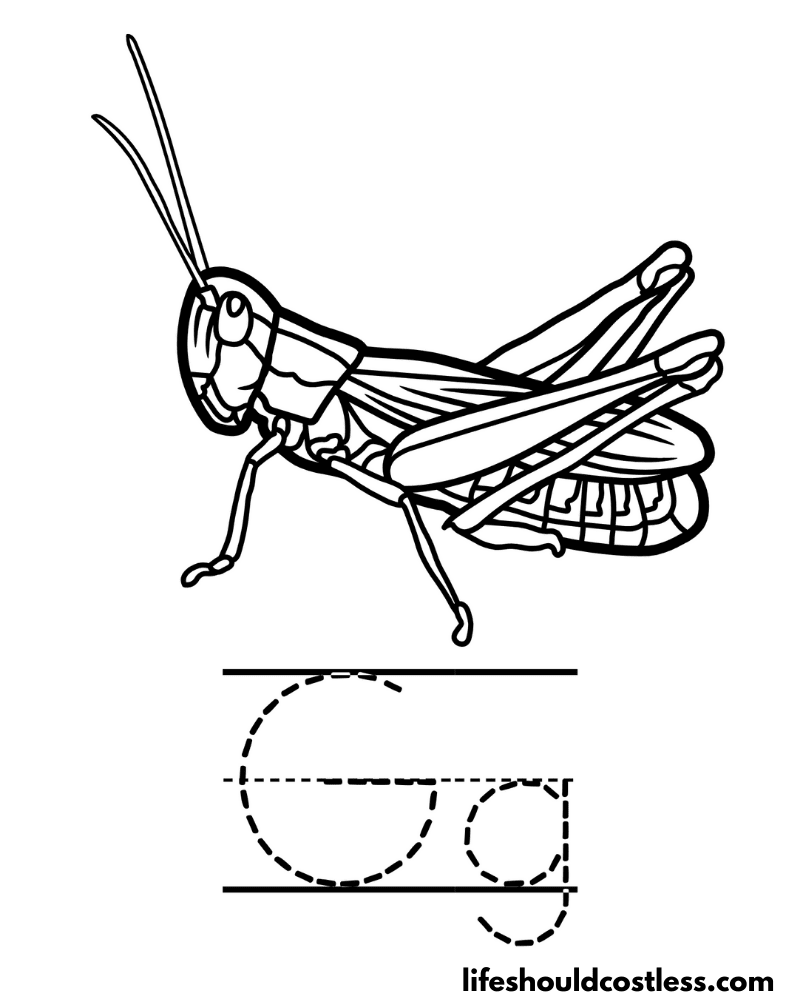

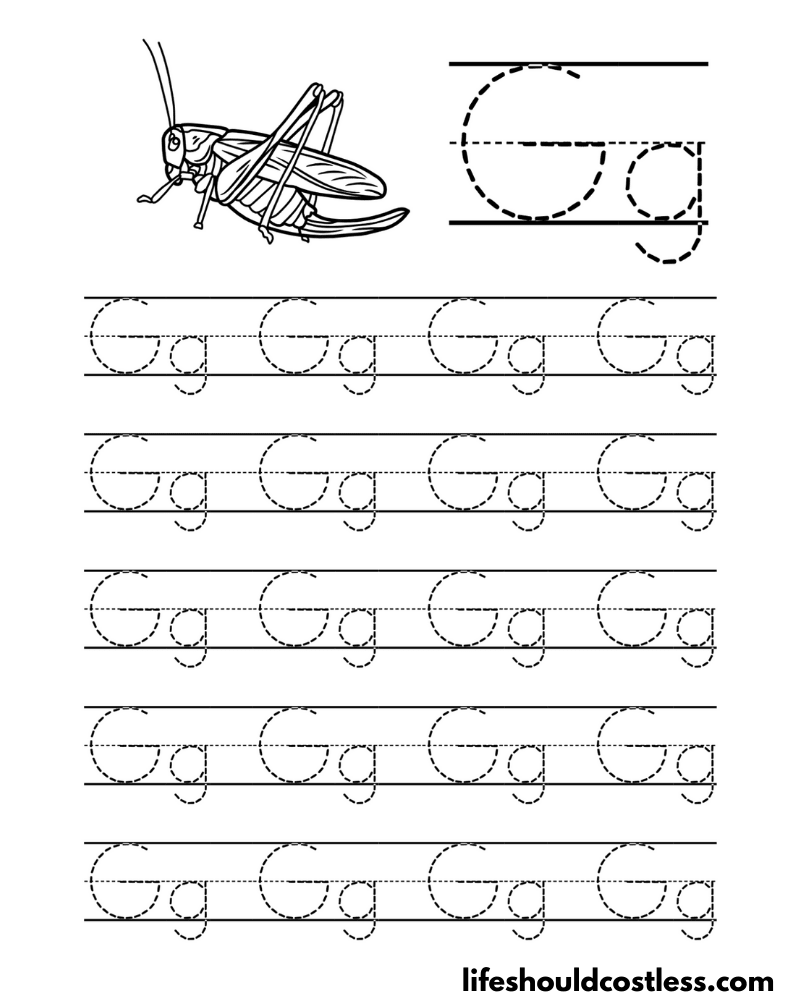
Various grasshopper designs
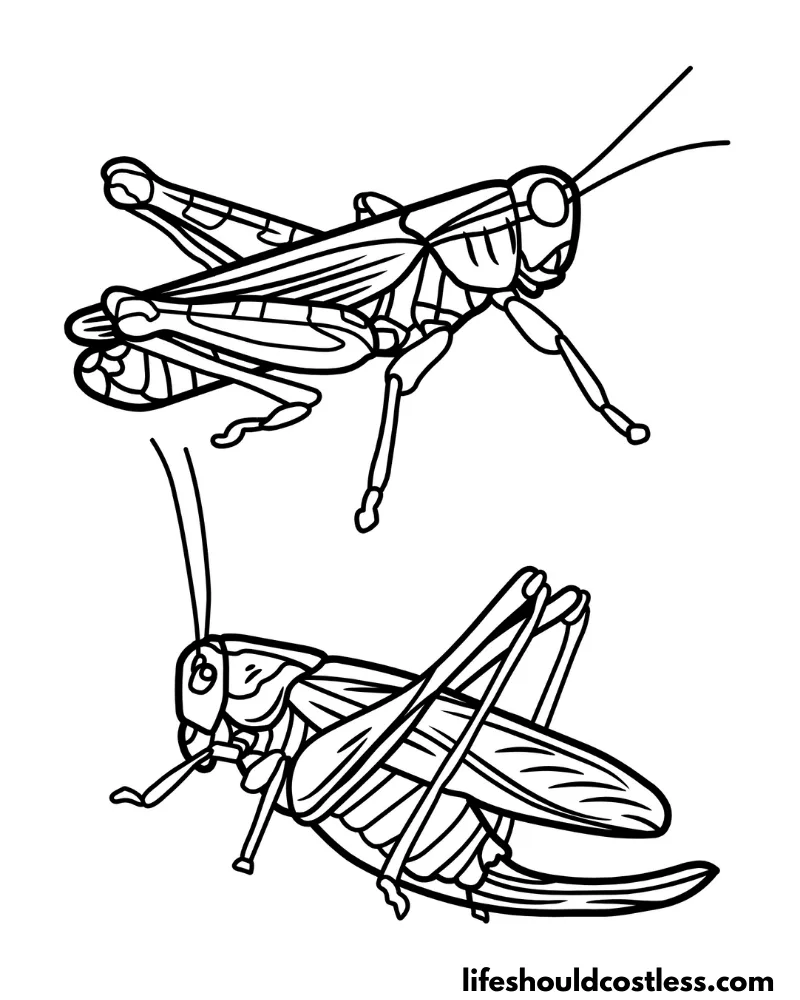
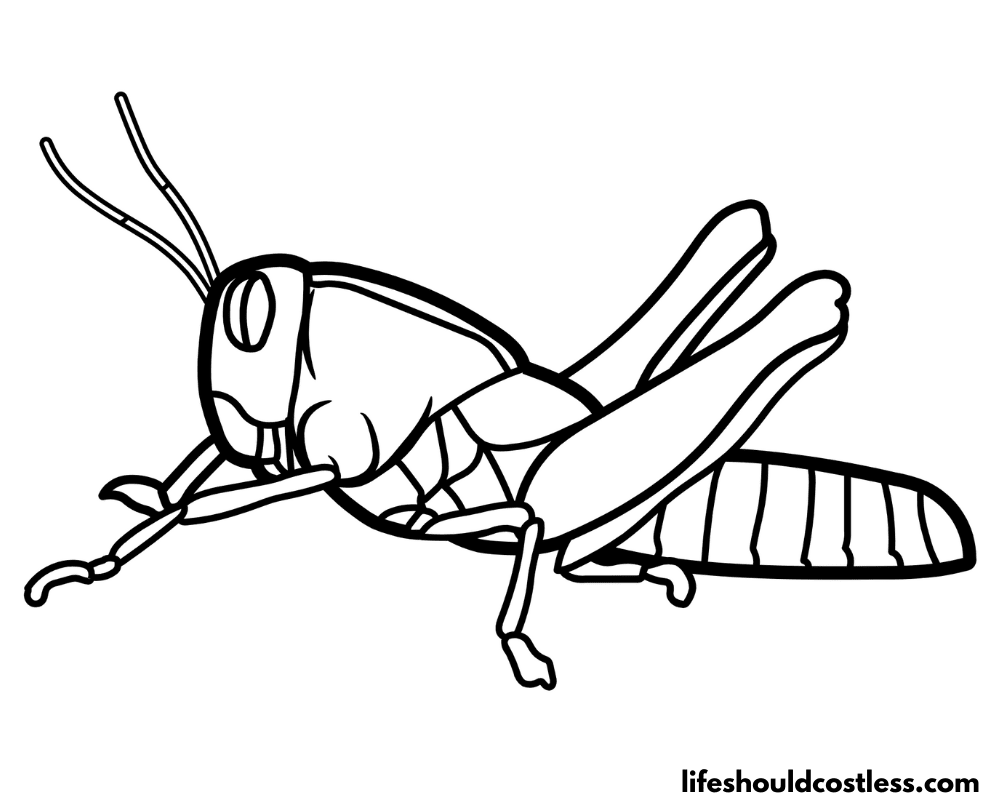
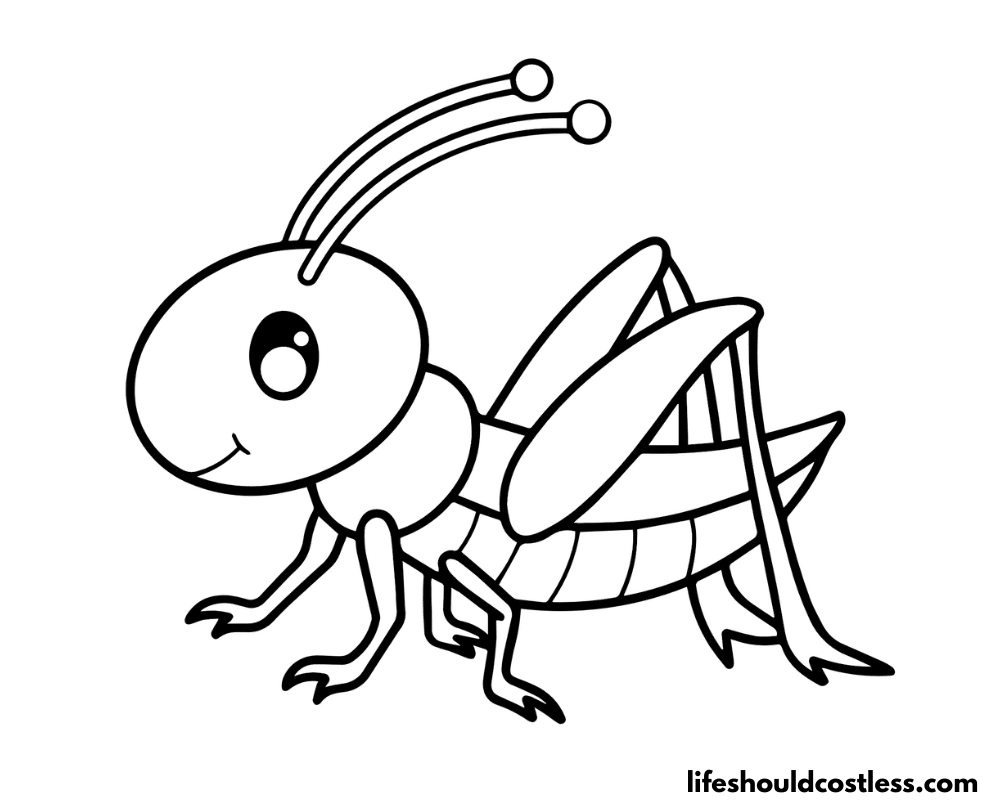
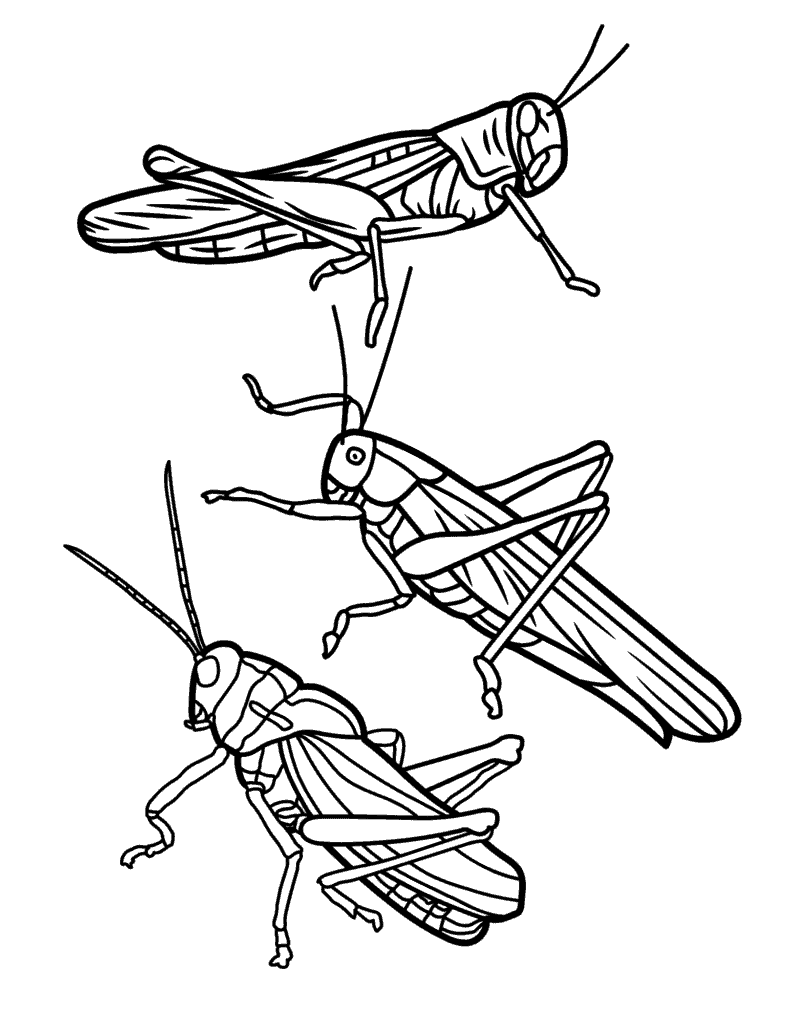
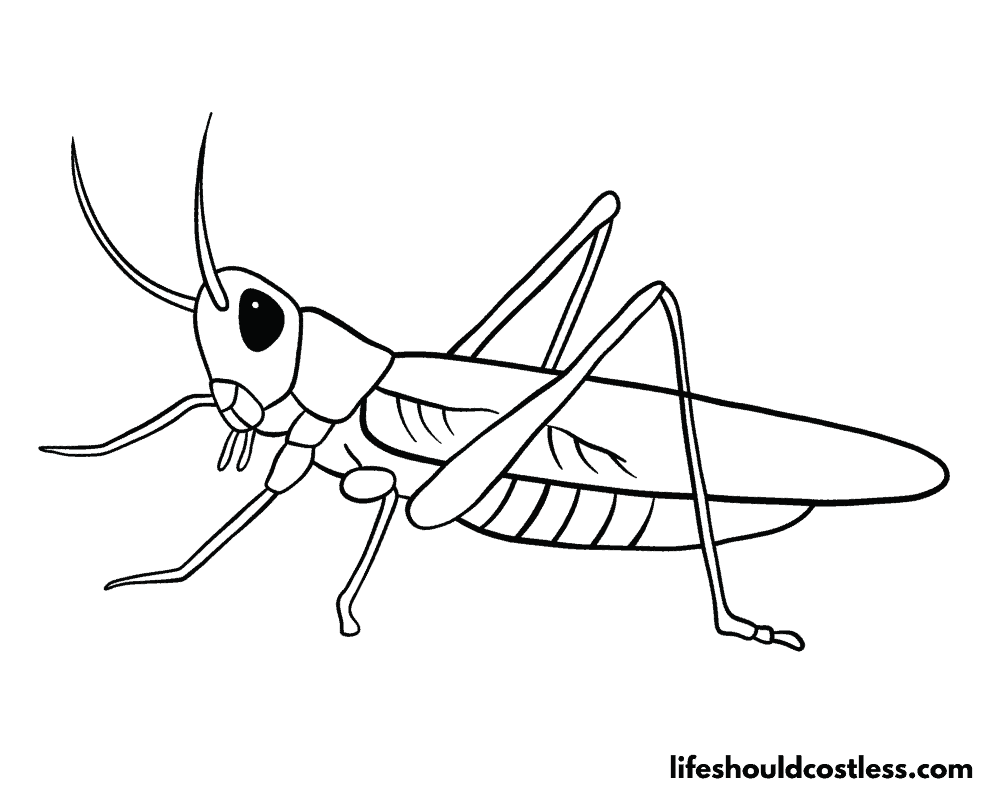
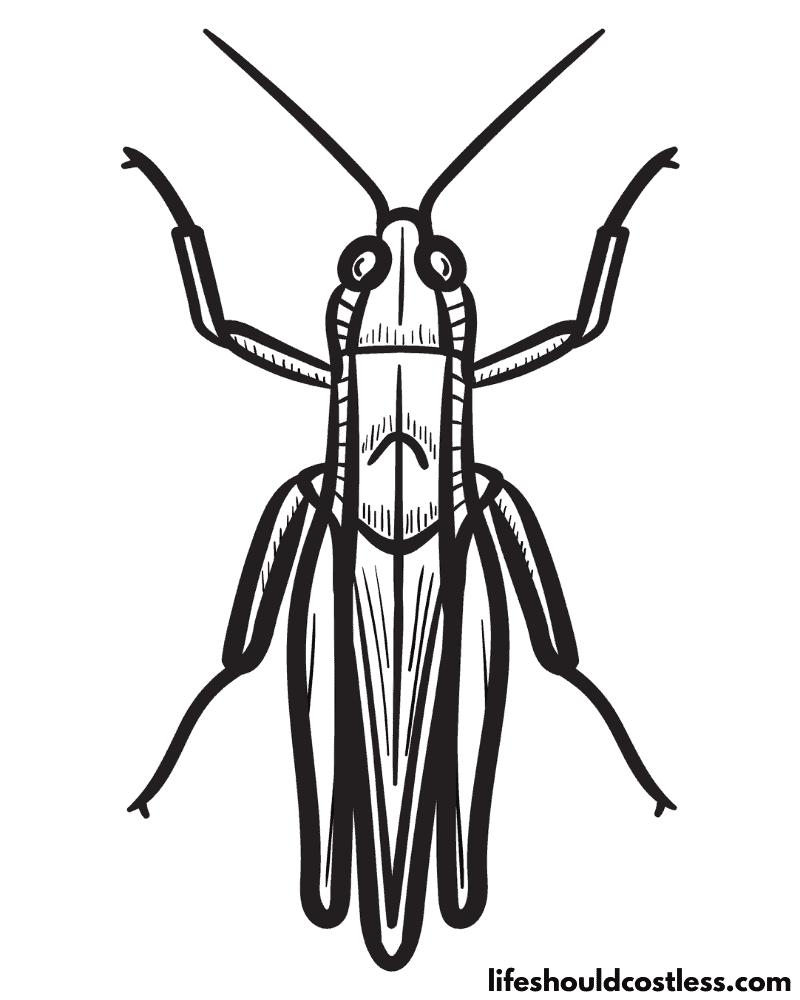
FAQ’s
A common grasshopper is typically green or brown, depending on its species and habitat. These colors serve as effective camouflage, allowing grasshoppers to blend into their surroundings.
However, some species of grasshoppers can also be yellow, red, or have a combination of colors. The specific coloration can vary widely among different types of grasshoppers.
Grasshoppers come in a variety of colors, and the number of colors they can exhibit is quite extensive. While green and brown are common colors that help them blend into their natural habitats, grasshoppers can also be found in shades of yellow, red, blue, and even black.
Some species may have bright and vibrant colors to serve as a warning to potential predators that they are toxic or unpalatable.
In addition to the primary body color, grasshoppers may have patterns, spots, or stripes that further add to their coloration.
The exact number of colors and patterns among grasshopper species is diverse, with thousands of species worldwide, each with its unique coloration and markings.
*I will add more grasshopper colour / color questions and answers as the questions get sent to me.
Conclusion
In conclusion, grasshopper coloring pages offer not only a delightful artistic endeavor but also a captivating window into the world of these remarkable insects.
As we’ve explored the intricate patterns and vibrant colors of grasshoppers through the lens of creativity, we’ve also gained a deeper appreciation for their ecological significance.
Coloring these pages allows us to connect with nature, engage in educational experiences, and nurture our artistic talents.
So, whether you’re a curious learner, an aspiring artist, or simply someone seeking relaxation and inspiration, remember that the world of grasshoppers is as colorful and diverse as the strokes of your coloring tools.
Embrace the joy of coloring, and let these pages serve as a bridge between art and science, fostering a deeper understanding of the fascinating world of grasshoppers.
Thanks so much for stopping by my blog and supporting my endeavors to make people’s lives a little easier/better/more affordable.
If you liked this post, or found it helpful in any way, please make sure to share it with your family, friends, and co-workers via social media….
Or you could even send them the direct link via email. Whichever way you choose to spread the love, I super appreciate it! ~Sarah
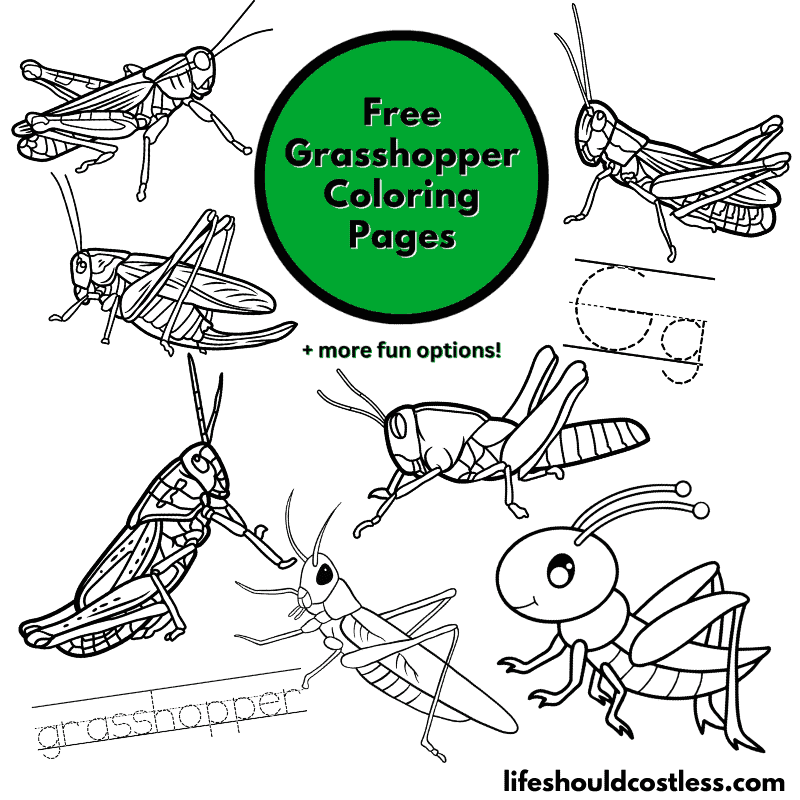
How To Follow & Support This Site
- If you would like to subscribe to my email list, go here.
- Make sure to follow along via social media, by going here.
- If you would like to learn how to really show your support to this site (at no cost to you), go here.
- If you would like to make a direct donation to the site, go here.
Check out my other free printables
- To see all of my free printables, go here.
- If you would like to see my index of free printable coloring pages, go here!
- To see all of my animal coloring pages, go here.
- To see all of my insect-related coloring pages, go here.
Otherwise, here are direct links to several of my other related posts that you’re also going to love:
Animals / Insects
Animals / Birds
Animals / Mammals
Other good resources for a printable grasshopper
- https://coloringtop.com/node/3790
- https://www.coloringpages.org/cat-grasshopper-295.htm
- https://www.coloring-pages-kids.com/animals/grasshoppers-coloring-pages.php
*This post was originally shared to this blog on 10/16/2023, and has since been updated to improve user experience, add video instruction, as well as to make it as shareable as possible across the social medias.
**Please note that I do try my hardest to provide factual, but easy to understand, information about each topic. If you notice a discrepancy in my coloring pages, facts, or see something that you deem “misinformation/incorrect” please make sure to notify me about it. I would prefer that you send me an email with a link to a more reputable resource on that subject, so that I can correct it as soon as possible. Thanks so much for helping this site become the best that it can be!
***Resources from djinkers were used in the production of this article.
***Resources from djinkers were used in the production of this article.
